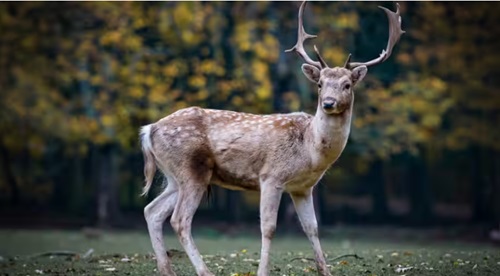Scientists Issue Warning Amid Surge in Chronic Wasting Disease: A Potential Threat to Humans
In a concerning development, researchers in the United States have issued a stark warning about the surge in Chronic Wasting Disease (CWD), often colloquially referred to as ‘Zombie Deer Disease.’ This neurodegenerative disorder, primarily affecting cervids such as elk, deer, and moose, has been labeled a “slow-moving disaster” by experts, urging governments to prepare for the potential transmission to humans.

Scientists Issue Warning Amid Surge in Chronic Wasting Disease: A Potential Threat to Humans“CWD, Labeled a ‘Slow-Moving Disaster,’ Sparks Urgent Calls for Preparedness”
Dr. Cory Anderson, a prominent CWD researcher, emphasized the need for vigilance, drawing parallels to the mad cow disease outbreak in Britain, where a spillover event from livestock to humans led to unexpected consequences. While no cases of CWD in humans have been reported thus far, the urgency stems from the unpredictability of zoonotic diseases and the potential for cross-species transmission.
The Scope of Chronic Wasting Disease:
CWD has been reported in 31 states in the United States, according to the Centers for Disease Control and Prevention (CDC). The disease is caused by prions, malformed proteins that accumulate in the tissues and brain, causing behavioral and physiological changes, emaciation, and eventual death in affected animals.
The disease is transmitted by direct animal-to-animal contact and indirectly through contact with infectious particles present in soil, vegetation, or feces. Additionally, animals can become infected if their pasture or feed is contaminated by prions carrying the disease, making prevention and containment challenging.
The Potential Risk to Humans:
Despite no confirmed cases of CWD in humans, recent studies suggest a potential threat. Monkeys, when exposed to infected animal meat or bodily fluids/brains of infected animals, face the risk of infection. The World Health Organization has advised keeping agents of all known prion diseases out of the human food chain since 1997.
Symptoms and Progression:
The CDC reports that symptoms may take more than a year to develop in deer. It typically begins with drastic weight loss, stumbling, and a loss of energy. At present, there is no cure or vaccine for CWD, adding to the urgency of addressing the potential risks associated with the disease.
Addressing the Challenges:
CWD researcher Dr. Cory Anderson expressed concern about the lack of known ways to eradicate the disease from animals and the environment. The slow progression of symptoms in deer, combined with the various modes of transmission, complicates efforts to contain the disease.
Conclusion:
As scientists and health officials grapple with the challenges posed by Chronic Wasting Disease, the call for preparedness and vigilance becomes more critical. While the potential transmission to humans remains uncertain, the comparison to past zoonotic events highlights the need for proactive measures, ongoing research, and public awareness. Staying informed through updates from reputable health organizations is crucial to understanding and addressing the evolving situation surrounding ‘Zombie Deer Disease.’